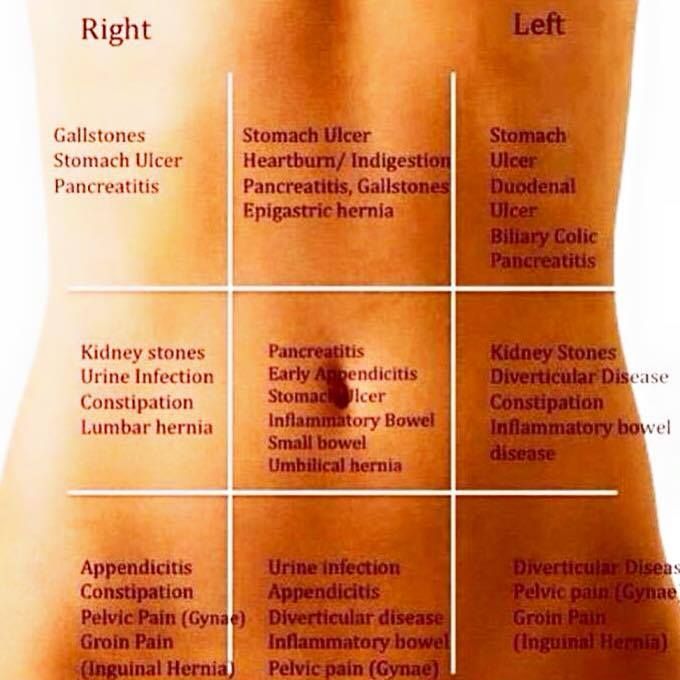Has it ever happened to you to feel some pain in the stomach area and ask everyone around you: what’s here? Which organ? We provide you the answer so that you don’t have to wonder and ask around anymore.

Although appendix inflammation is the most common case, sometimes the colon might take the guilt as well. It might be a serious condition like ulcer colitis or Crone disease. Divertikum might be an unfamiliar word to you, it is actually expansion of the red intestinal mucosa, and can be a cause of serious pain, especially on the left side of the stomach.

You can simply look at the picture so that you wouldn’t have to guess what’s going on with your body. If you feel pain once or twice no need to worry. However, if the pain constantly reappears or if it is super strong so that you feel uncomfortable, you should visit your doctor.
Most of the conditions can be taken care of if caught on time. Doctors say that the spot where you feel pain doesn’t necessarily have to be the location of the pathological process. The stomach is located under the color bone.
Bellow that, above your bellybutton is the duodenum of the small intestine. Right under the right ribs, on the inside is the gallbladder and if you touch it, pain can increase.
If you feel pain around the waistline it could be a problem with the pancreas or the liver. If the pain is on the right side of the stomach area it could be the large intestine.
If you feel pressure in that area it could be a consequence of stress, bad diet or constipation.
If the pain is present in the right side of the groin and if it hurts when touched, or when this happens when lifting the leg, it could be the appendix.
Pain in the area of the small groin, above the pubic bones, under the bellybutton could mean that you have a problem with the bladder.
If you’re a woman it could also be the ovaries, and if you are a man it could regard prostate problems.












